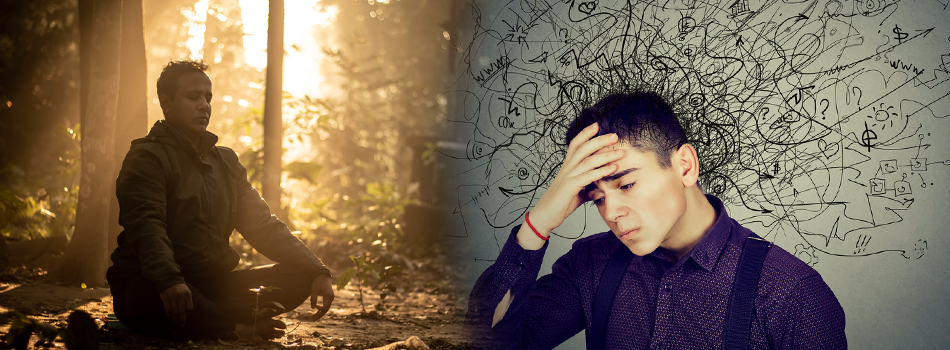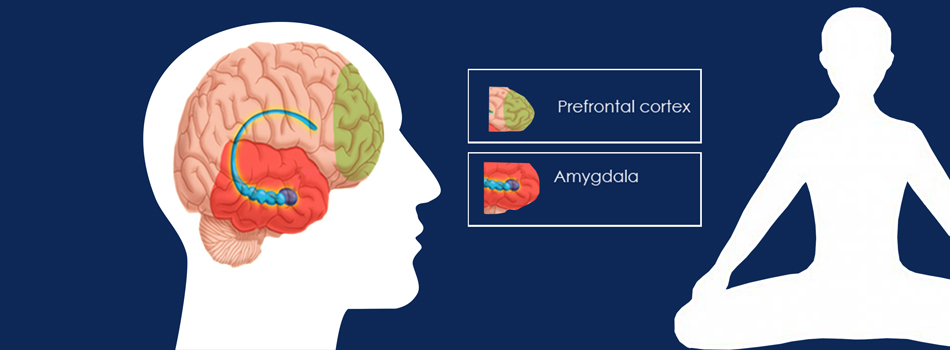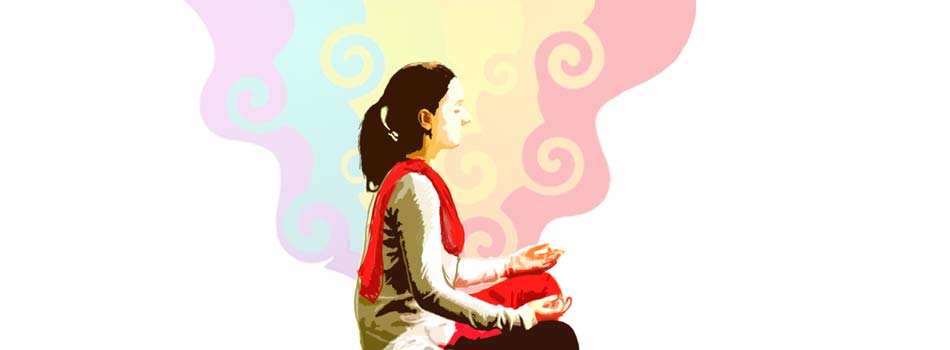
Beat Anxiety & Depression with the Power of Meditation
published : 6 May 2025
According to the latest statistics from the World Health Organization (WHO), 3.6% of the global population experiences anxiety disorders each year, while 3.4% suffer from depression.
Another study reveals that over 18% of children and adolescents worldwide are affected by depression.
What’s more concerning is that current statistics only reflect cases that have been diagnosed or treated—meaning they include only those who have sought medical help or received a formal diagnosis.
If we consider the many individuals who lack access to mental health services or remain unaware of their condition, the actual numbers may be significantly higher.
The widespread nature of anxiety and depression has become a growing concern for nearly every country.
Regardless of the root causes, early awareness of the symptoms can make these challenges easier to manage from the beginning.
Symptoms of Anxiety Disorder
An individual with an anxiety disorder experiences persistent and excessive worry, fear, and a sense of dread that is difficult to control. This mental state is often accompanied by physical symptoms such as a rapid heartbeat, trembling, sweating, restlessness, difficulty concentrating, and insomnia.
These symptoms go far beyond ordinary nervousness or everyday stress. They can deeply affect a person's thoughts and emotions, often disrupting their ability to think clearly or behave rationally. In many cases, this leads to withdrawal from daily activities, social interactions, and responsibilities, further impacting their quality of life.
The severity and symptoms of anxiety disorder can vary depending on its type.
Different forms include Generalized Anxiety Disorder (GAD), social anxiety disorder, and specific phobias—such as an intense fear of certain objects, situations, or environments. Each type presents with unique patterns of emotional and physical symptoms.
What is Clinical Depression?
Also known as Major Depressive Disorder (MDD), clinical depression is a serious mental health condition that has become increasingly common in recent times. It goes far beyond occasional sadness, affecting how a person feels, thinks, and functions on a daily basis.
Understanding Clinical Depression
Sadness or grief is a natural part of the human experience. However, when feelings of sadness, hopelessness, emotional emptiness, disinterest in daily activities, and a lack of joy persist for two weeks or more—with no sign of relief—it may indicate clinical depression. This condition can severely impact a person's ability to function and significantly lower their quality of life.
Symptoms of Clinical Depression
In addition to persistent low mood and loss of interest or pleasure, clinical depression may involve:
- Changes in appetite and weight (gain or loss)
- Sleep disturbances (insomnia or excessive sleeping)
- Difficulty concentrating or making decisions
- Memory problems
- Constant feelings of worthlessness or guilt
- Fatigue or loss of energy
- Recurring thoughts of death or suicide
What Is the Way Forward?
When these symptoms become intense and long-lasting, it’s essential to seek help from mental health professionals such as psychiatrists or psychologists.
Accurate diagnosis is key. A doctor will assess the duration, severity, and impact of the symptoms to determine the best course of treatment. This may include medication, psychotherapy, or a combination of both, depending on the individual's needs.
Modern medical professionals are increasingly recognizing the benefits of meditation as a complementary approach to medication. However, it’s crucial to first assess the type and severity of the patient’s condition.
Some individuals may require guidance from an experienced instructor to practice effectively, while others can benefit from self-practice with proper training.
Experts recommend caution if any emotional changes persist over time and start to interfere with daily functioning. It’s important to address these changes with professional support to ensure the right approach.
How Does Meditation Relieve Anxiety and Depression?
- Focus on the Present:
During meditation, the focus on breath helps anchor the mind in the present moment. This reduces the tendency for negative thoughts to distract you, allowing you to stay grounded. - Increases Self-Awareness:
Regular meditation enhances self-awareness, making you more attuned to your negative emotions and physical sensations. This heightened awareness helps identify the early signs of anxiety or depression, enabling you to take proactive steps to prevent them. - Promotes Acceptance and Compassion:
Meditation fosters a mindset of generosity, neutrality, and self-acceptance. By forgiving yourself, you reduce the impact of negative or confusing thoughts about yourself and others, helping to alleviate emotional turmoil. - Rewires the Brain for Positivity:
Continuous positive thinking in meditation can alter brain functioning, teaching you to savor and enjoy each moment. Over time, this shift from negativity to optimism helps replace feelings of hopelessness with a more hopeful outlook. - Connect with Nature:
Whenever possible, step outside and immerse yourself in nature. Take a moment to appreciate the trees, flowers, and fresh air. This connection with the natural world can refresh your mind and deepen the benefits of meditation, reducing anxiety and depression. - Builds Mental Toughness and Confidence:
Meditation strengthens mental resilience and boosts self-confidence. As you grow more self-assured, the causes of depression gradually diminish, leaving you feeling more empowered and balanced.
Make meditation a regular part of your life to transform your mental health. It's not just a practice — it's a powerful, natural remedy for anxiety and depression, offering a path to healing that addresses the mind and body. Embrace it as a tool for lasting peace, emotional balance, and a brighter, more hopeful future.


















